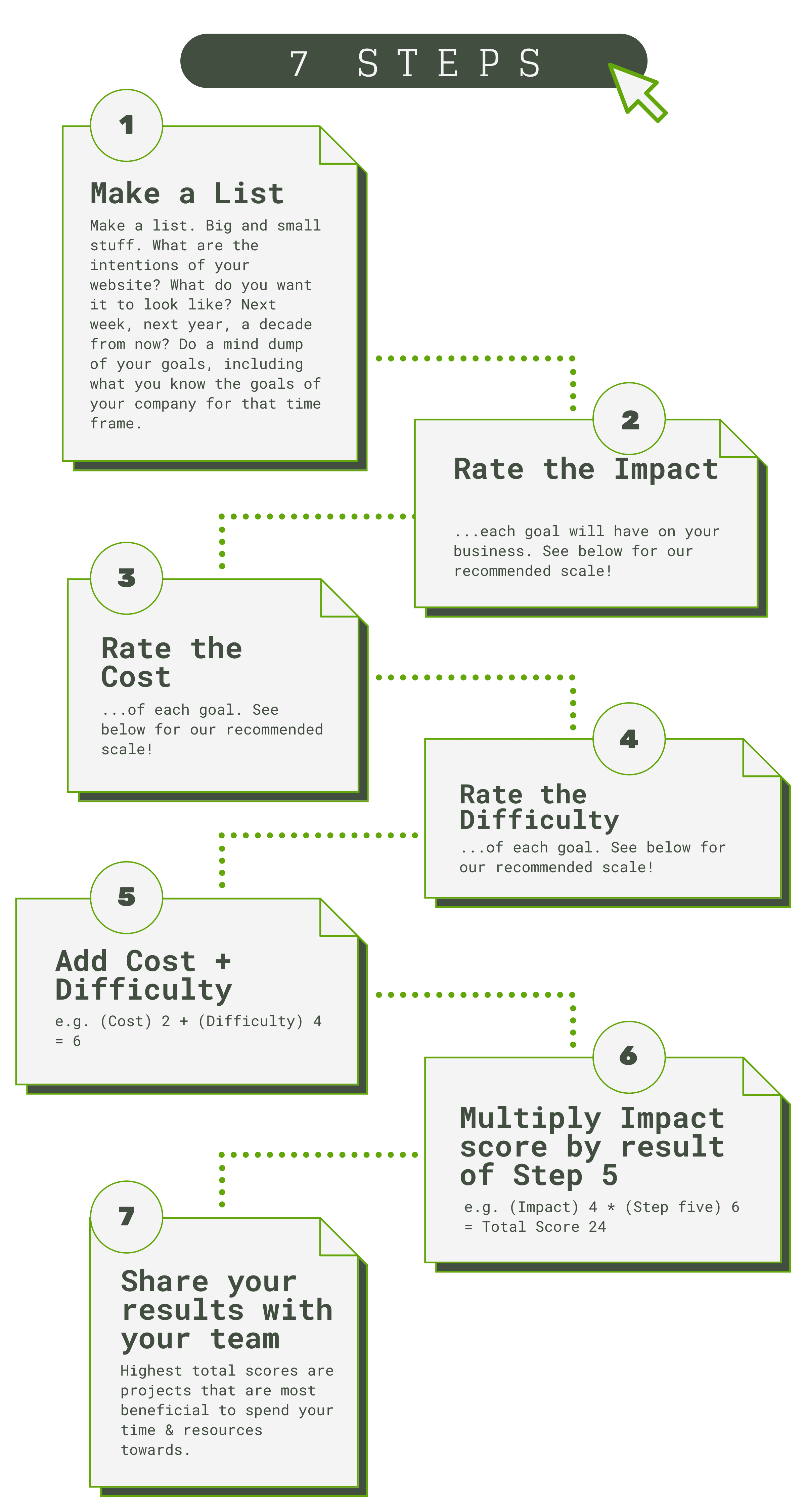It can be overwhelming to stop and think about all of the tasks on your website to-do list. Some of the items on there have probably been around since the last web launch ????. Maybe other brilliant ideas have been lost along the way. Or maybe the list is all in your head, or perhaps there’s a scary spreadsheet about it… Whatever the case, I want to share one of my favourite prioritization methods with you, so you can become a master of website prioritization strategy. I’ve revamped a general business strategy into a formula for prioritizing website tasks. At Cheeky Monkey Media, we tested it on ourselves (as we love to do), and a strategic to-do list was born!
Your Steps to Success (or at least a Strategy)
There are 7 simple steps to prioritizing your web tasks:

As mentioned in the last step, the highest total scores indicate the projects that are most beneficial to spend your time & resources towards. Below you’ll find a simple formula for prioritizing website tasks.
The 3 Scales of Truth
To work through the exercise, we apply a set of 3 scales to help prioritize.
Impact rating scale is based on the severity of usability problems & level of stakeholder buy-in:
1 = Not a usability problem, low stakeholder buy-in
2 = Cosmetic problem only, low to moderate stakeholder buy-in
3 = Minor usability problem, moderate stakeholder buy-in
4 = Major usability problem, moderate to high stakeholder buy-in
5 = Usability catastrophe, or high stakeholder buy-in
Cost scale will depend on the size and nature of your business, this is an example for a mid-size business model:
5 = Under $1000
4 = Under $5000
3 = Under $10000
2 = Under $50000
1 = Over $50000
Difficulty Scale: This one is more difficult to define, IMO. If you’d like to break down the 3 difficulty ratings and then find the average to make it more accurate, feel free to try that.
5 = Within 1 month/No moving parts
4 = Within 6 months/Minimal moving parts
3 = Within 1 year/Some moving parts
2 = Within 3 years/More complex moving parts
1 = Within 5 years/Heavily relies on many moving parts
By moving parts, we’re referring to variables required to complete a task. Something with no moving parts would be reading a book – it only requires you & a book. Something with many moving parts would be buying a house – requires savings, good credit score [perhaps you have debt to pay first], being approved for a mortgage, research, hiring professionals, etc. etc.
As we’re referring to websites here, depending on the size of your company and number of stakeholders involved in your web project, you’ll determine what moving parts there are, and therefore what level of difficulty is present. This formula can also nudge your team into a more agile development environment– an iterative approach that results in a more constant, consistent progression of your website.
Go Forth and Prioritize
Not only is this formula applicable for website decisions, it really can be applied to almost anything in life. Whether you’re making decisions around business project viability and urgency, or helping your friends and family (and hopefully yourself) map out their future, this tool is useful in eliminating some of the bias around decision making – something we could all use a little help with.
We’d love to hear if your results helped clarify your website priorities. Ping us at [email protected].




